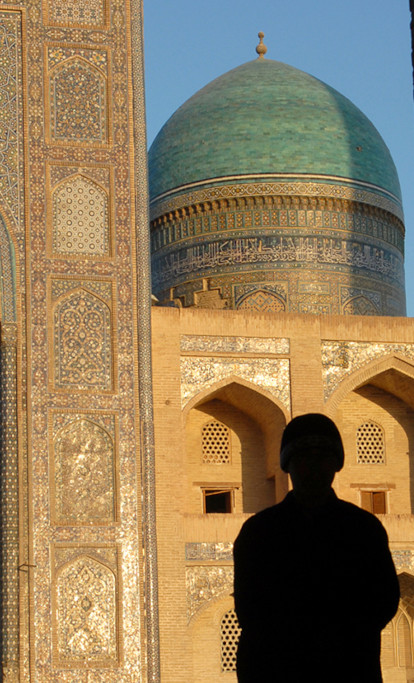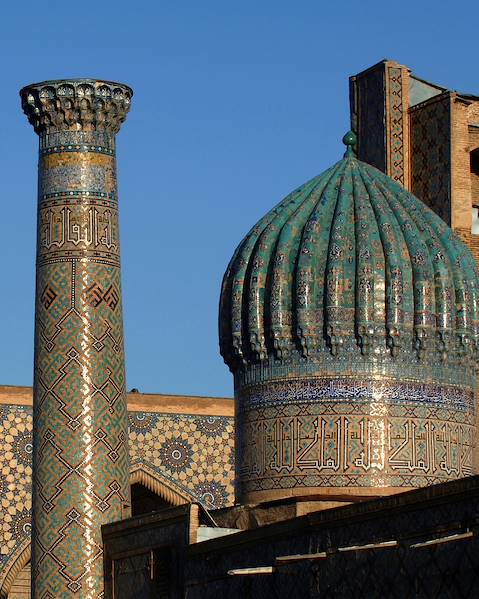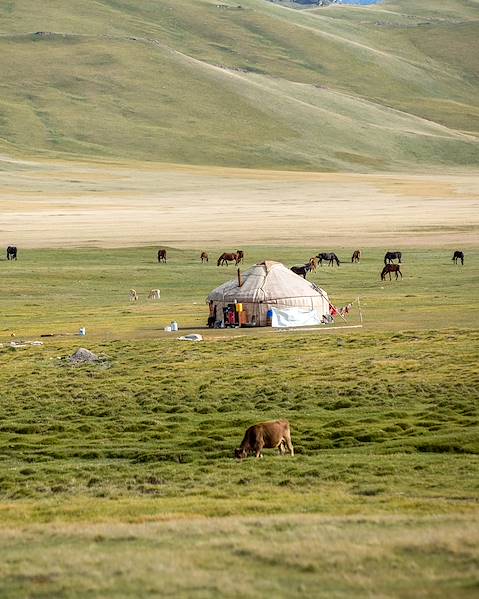If one colour were to represent Uzbekistan then surely it would be blue. Blue mosaics, blue ceramics, blue majolica, cloudless (normally) blue skies. But Uzbekistan is also home to green oases; the country is a desert in the middle of which Silk Road cities flourished around precious water sources. And then there is the ochre brickwork of Bukhara. As for the Uzbeks themselves, some could be mistaken for Mongolians and others for Southern Europeans, a striking reminder that in Uzbekistan you are at a crossroads of civilisations between Europe and Asia. As with everywhere else in the world, money makes Uzbekistan go round, and you should travel with lots of dollars (Euros are a distant second best) in cash because ATMs are a rarity. The local currency is the Som, and the som of its parts (boom boom) is 100 tyin. Tipping is appreciated. Forget using credit cards except in international hotels but you will see banks on street corners.
The Uzbek language is of Turkic origins but the Tajik minority speak Tajik, which is an offshoot of Farsi, the language of Persia (now Iran). The country is officially Muslim, but you will not hear the call to prayer, and the country’s mosques are frequented mainly by old men. Uzbekistan is a very safe country for visitors but you can expect infrastructure issues; the country experiences regular water shortages and electricity blackouts. Despite this and other hardships you will appreciate the hospitality of the locals. The national dish is plov, a mixture of rice, onions and meat cooked in cottonseed oil. Why cotton? Because, in Soviet times Uzbekistan was set aside almost exclusively for the cultivation of cotton.
A final recommendation: when you greet someone put your hand on your heart and say ‘assalomu alaykum’ (the Uzbek variant of the standard Arabic greeting: ‘peace be unto you’, but used as ‘good morning’, ‘good day’ etc).















